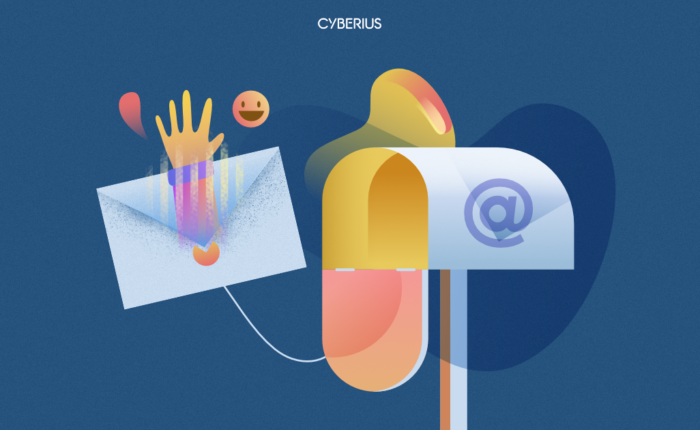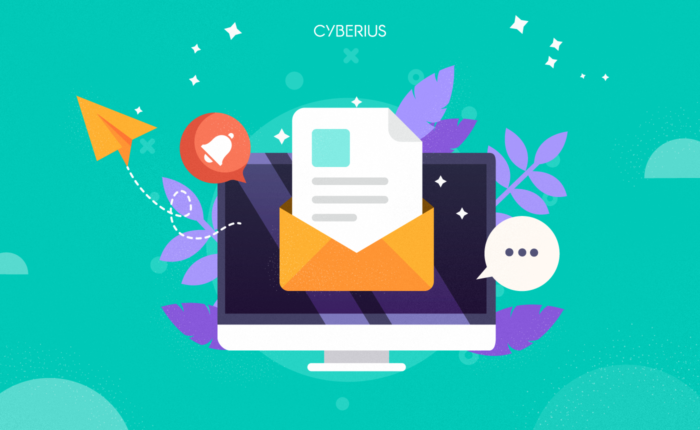So you want to run an email campaign, do ya? Not so fast. There’s some very important technical steps you need to make sure are followed before & during your campaign.
The infographic below was put together just for you digital marketers, because email, as you probably know, is a huge avenue for marketing.
1. Email Configuration:
It’s important to protect the reputation of your company’s domain and your IPs’. For this reason, when you’re doing email marketing, you want to use a seperate company domain, as well as an email address used only for outbound campaigns.
You also want separate email addresses for dynamically testing campaign variations.
It’s important to warm up your new campaign email, because reputation doesn’t just happen automatically… it takes time. When you’re baking a batch of cookies, you should preheat the oven, right?
Ok, maybe it’s not the best analogy, but you get the picture. Just send out a few emails per day, and work your way up to higher amounts. But remember, just like with cookies, it’s not the quantity that counts, it’s the quality.
Try not to send more than 50 emails from one address per day, otherwise your results may look more like SPAM than cookies. Also remember, it’s better to have a smaller, yet more precise, customized, & personalized prospect database, than to have one that’s all across the board, disorganized, and unsegmented.
2. Email Verification:

It’s important to make sure that your email is verified. This will include setting up your SPF and DKIM. SPF stands for Sender Policy Framework, and it’s a security mechanism which defines the IP address that can be used to send emails from your domain.
You want to check what your current SPF is, set up the administrative console according to your domain instructions, and put any of your email apps which are using their own SMTP into the SPF record.
Next is your DKIM, which stands for: DomainKeys Identified Mail. It’s the technical standard for protecting email senders and recipients by adding encryption to sign your emails.
To set up your DKIM, 1st: generate your email’s public key by logging into your email provider’s admin console based on your email provider’s instructions. 2nd: take the generated text, copy and paste it into the right place in your DNS records.
3rd: turn on email signing to start sending emails which include your signature encrypted with your private key. And then you’re ready to continue!
It’s also important to make sure that you have a spot-on unsubscribe link. That’s right, your unsubscribe link should be stellar, absolutely superb, spick & span… rock that unsubscribe link!
It should be so obvious that no one can ever complain that they never saw it, and yet so utterly boring, so fantastically drab, so drearily dull, so ordinary, and completely uninteresting that compared to your amazing content, they’ll never want to pay attention to it.
Of course, there are also some people who believe the opposite is true, they believe it should be up front and center, even putting an extra link at the top of the email! That makes sense if you’re trying to filter down to only those people who really want to be on your subscription list. You should choose the style you think will be better for your business in the long-run.“

Here are some general rules for an unsubscribe link:
Do:
- Offer a chance to “opt-down” or “update your preferences”.
- Include a short survey or open-ended comment box to find out why they unsubscribed.
- Make it no more than 2 pixels smaller than the body copy, not smaller than a size 8 font, not low in contrast against a similar background, and always highlighted or underlined.
- Put it in the footer area of your email.
- Make the link prominent, underlined, & easy to see.
Do Not:
- Don’t hide the unsubscribe link.
- Don’t make people log in to unsubscribe. The fewer steps it takes to unsubscribe, the better.
- Don’t send an email confirmation of the unsubscribe action. Don’t immediately ask to re-subscribe.
- Don’t make people wait days for their unsubscribe to take effect. There’s no complex filing process needed in order to process unsubscribes.
You also need to make sure to check your email provider’s sending limits, because each provider has their own hourly and daily limits for sent messages. Exceeding these limits could get your account or mailbox blocked. There are three steps to doing this:
- Define who your email provider is.
- Check their help section for the info about daily sending limits.
- If you don’t find any clear information, contact the provider directly and ask them about their hourly and daily sending limits.

3. Content Focus:
Of course the most important thing about an email is it’s actual content. You want to make sure to avoid gimmicky and spammy words that could get your email thrown in the spam folder. You also want to make sure to personalize your emails for the recipients.
Segment your lists accordingly. There’s many different ways to segment your list, so do so however makes the most sense for your email campaign. Recipients can actually be segmented into multiple lists.
You should also consider building customer personas by studying their interactions with your website. Make sure to use dynamic content in your emails and on your splash page, that changes based on their behavior and preferences.
Also, send personalized offers to the right contacts, offers that would be relevant to them based on what you know. You don’t want to be sending totally irrelevant offers to your contact base all the time, it’s a sure way to get shut out, or even possibly shut down (in a worst case scenario).
Timing is also an important part of customization, as you want to make sure to send your emails based on times that they’re most likely to be opened and read by the recipients.
Also, make sure to make any necessary changes relevant to the device used to read it. You should also consider asking why they visited your website, or became a user, or subscribed to your list.
This can help you improve. Make sure to also ask why certain people unsubscribe, that can also be quite helpful. If you have the resources, your recipient’s social media accounts might help segment them even further. And, of course, make sure that you have automated emails set up based on behavioral triggers.
You also want to set up an HTML email signature. There’s quite a few things to keep in mind here, which we’ve outlined in the infographic below. We also show you some great HTML signature generators as well.

4. Segment Your Contact Base:
As mentioned above, it’s important to segment your contact base. The first step begins before even starting your next campaign (or even before you begin collecting your database if you’re just starting out).
You need to define your Ideal Customer Profile (ICP), which is all about defining which customers would benefit the most from your offering. They should also be individuals that would provide your business with significant value, and be the type of person you’re looking for.
This will help you:
- Increase your possibilities of attracting high-quality leads and reach your goals.
- Avoid wasting time and money pursuing the wrong leads.
- Extend your average Customer Lifetime and Customer Lifetime Value.
- Have a higher chance of getting your offer referred to others.
Here’s the steps to find your perfect ICP:
- Describe your best customer by looking at your top user list. You should identify and note down any relevant demographics that stand out.
- Next, interview your top customers. Ask them questions to better understand their experience with your product or service, and with your company.
- Keep a lookout for common threads in the data you collect.
- Review your customer complaints and feedback.
- Study your website traffic. Tools like Google Analytics can reveal what they’re most interested in, which pages they’ve spent the most time reading, and other factors as well.
- Look at the financial data of your most profitable customers.
This will help you find your perfect ICP. After you’ve discovered that, it’s time to collect your contacts based on the topic of the current campaign. It’s a good idea to upload them in small batches, like 20 to 50 at a time to help maintain quality.
The quality of your contacts is extremely important. Some suggest not purchasing ready made prospect lists, as it somewhat disables dynamic quality testing and improvement (but of course you can always segment them further as they take action).
Also, don’t guess on email addresses, split them into segments, and verify them. It’s also good to aim for the business email addresses, if your email is concerning their business, and personalize them.

5. A/B Testing:
Finally, it’s time for A/B Testing. This is basically where you choose something to test out (like your subject line, main-body copy, hyperlinks vs buttons, button text, mostly images vs mostly text, etc), and you test it.
You’ll still send out the previous version, but you’ll also be sending out a new version with the changes. This can be done over and over again until you find the ideal email for maximum open and click-through rates. You can see more about that in the infographic below.

Learn more on these topics in the infographic below, and get going on your next (hopefully) successful email campaign!

Get informative infographics like this one for your business to help grow your online community, and more. We also offer a variety of other digital marketing services. Contact us at: zaneta@cyberius.com.





Leave a Comment